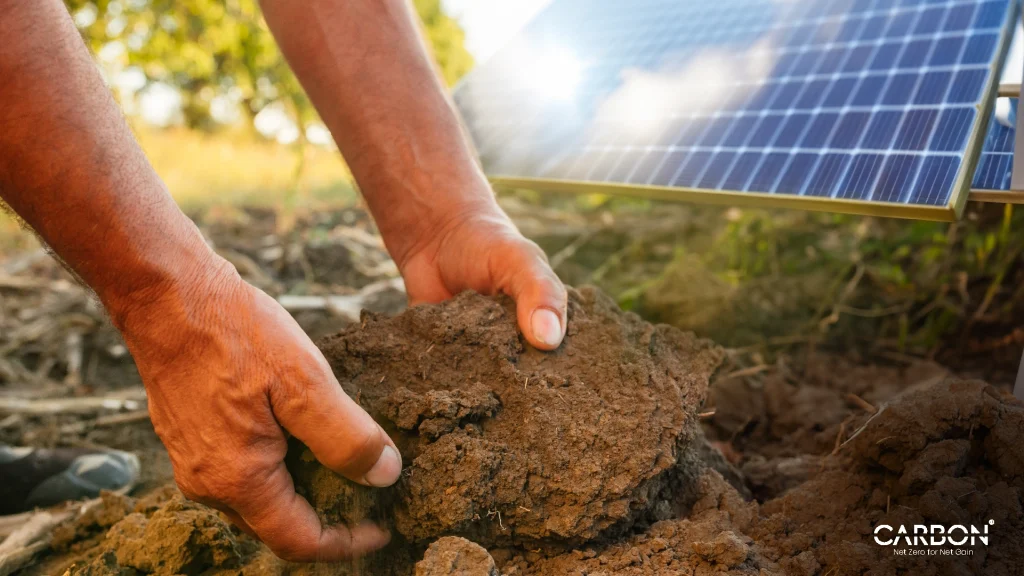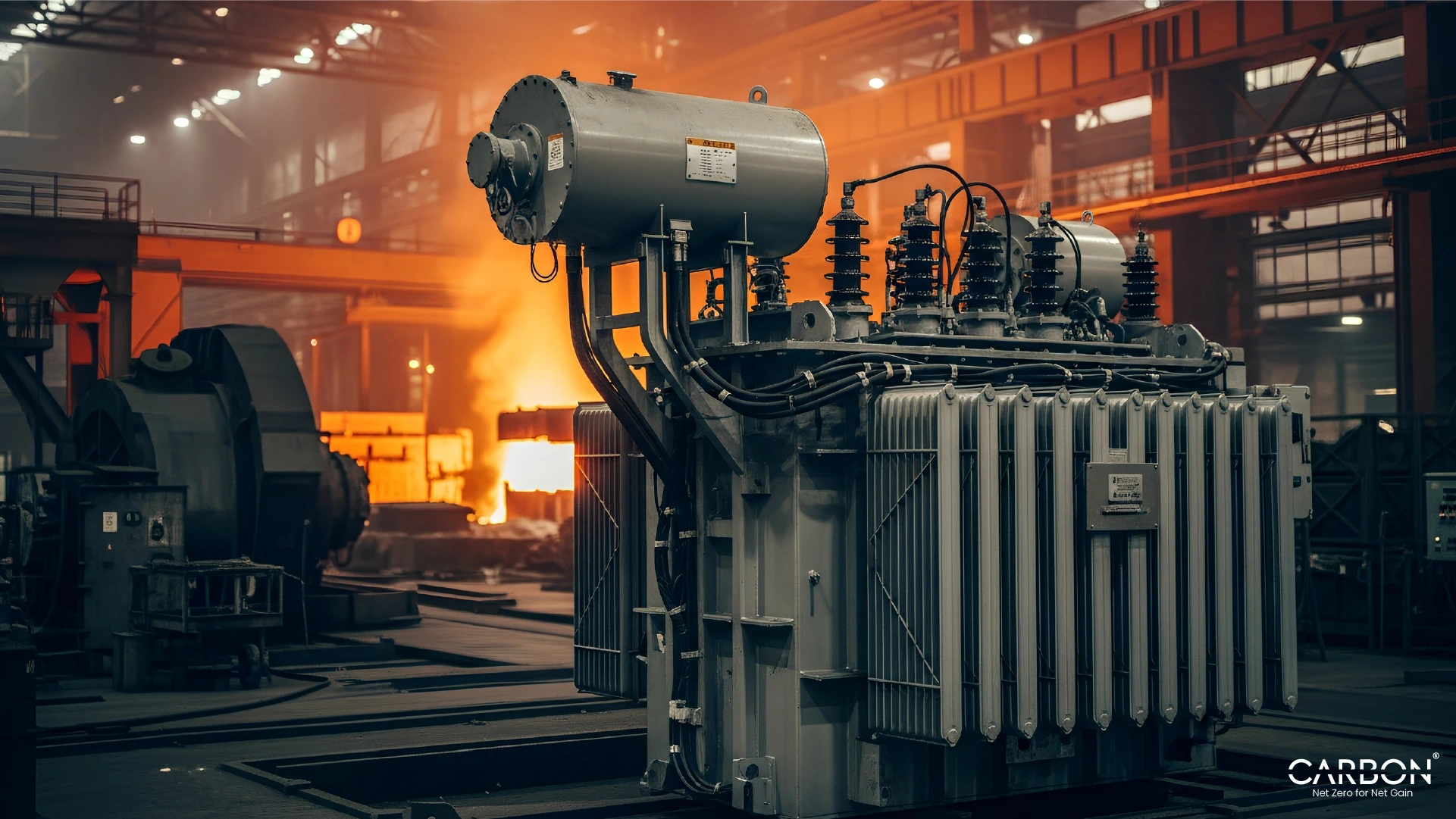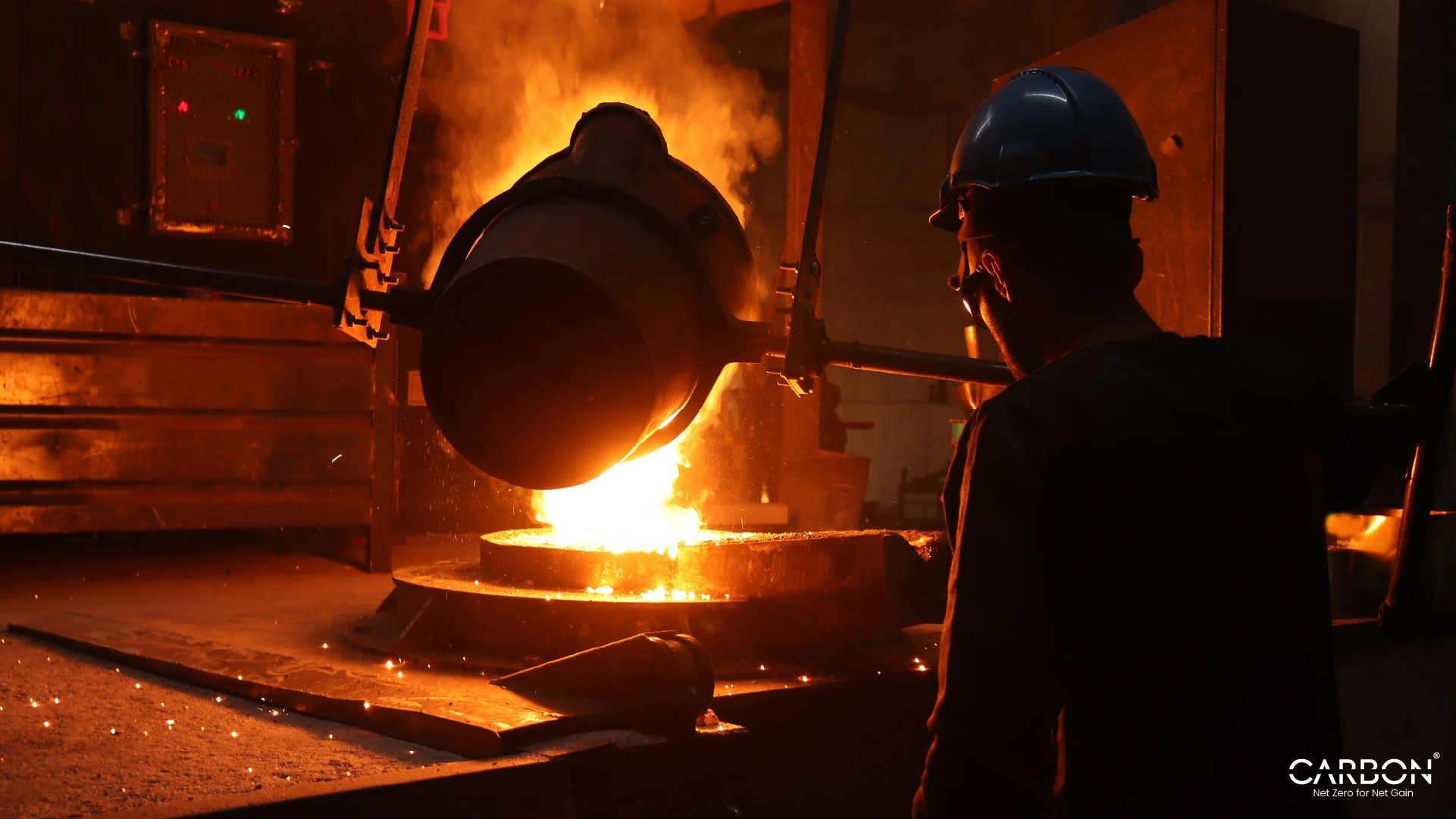Key Takeaways
- High-tech tools alone can’t deliver true resilience
- TEK offers centuries of proven sustainability strategies
- The CarbonMinus Fusion Framework (CFF) blends TEK with tech
- Resilience = adaptability, not just optimization
- Ethical integration builds credibility and results
- TEK enhances context, precision, and long-term thinking
- Real impact comes from partnership, not appropriation
- Continuous feedback strengthens both systems over time
- Fusion is the future—smart, scalable, and deeply rooted
Corporations are pouring billions into sustainability tech. AI-driven monitoring systems, predictive analytics, energy-efficient infrastructure. All impressive. All valuable.
But here’s the truth: They’re missing something big.
For centuries, Indigenous communities have practiced sustainability without the help of high-tech tools. They’ve built systems that survive everything from floods to droughts. Systems that thrive on balance, adaptability, and respect for natural cycles.
And while companies are scrambling to hit their sustainability targets, they often overlook a powerful source of knowledge—Traditional Ecological Knowledge (TEK).
TEK isn’t rudimentary. It’s refined. And when combined with modern technology, it could be the key to unlocking deeper, more meaningful resilience.
This article introduces a structured approach called the Fusion Framework (CFF)—a model designed to blend ancient wisdom with cutting-edge technology for maximum sustainability and efficiency.
Because while everyone else is chasing innovation, the real answers might be found by looking back.
Why High-Tech Alone Isn’t Enough For True Sustainability
Every corporation wants to be resilient. Every CEO wants to say their operation is sustainable. And most of them think high-tech solutions are the answer.
But technology alone has limits.
AI-driven monitoring systems can detect inefficiencies. Predictive analytics can forecast disruptions. Renewable energy systems can reduce carbon footprints.
But if your approach to sustainability ignores the knowledge refined over centuries by Indigenous communities, you’re leaving massive opportunities on the table.
Here’s why.
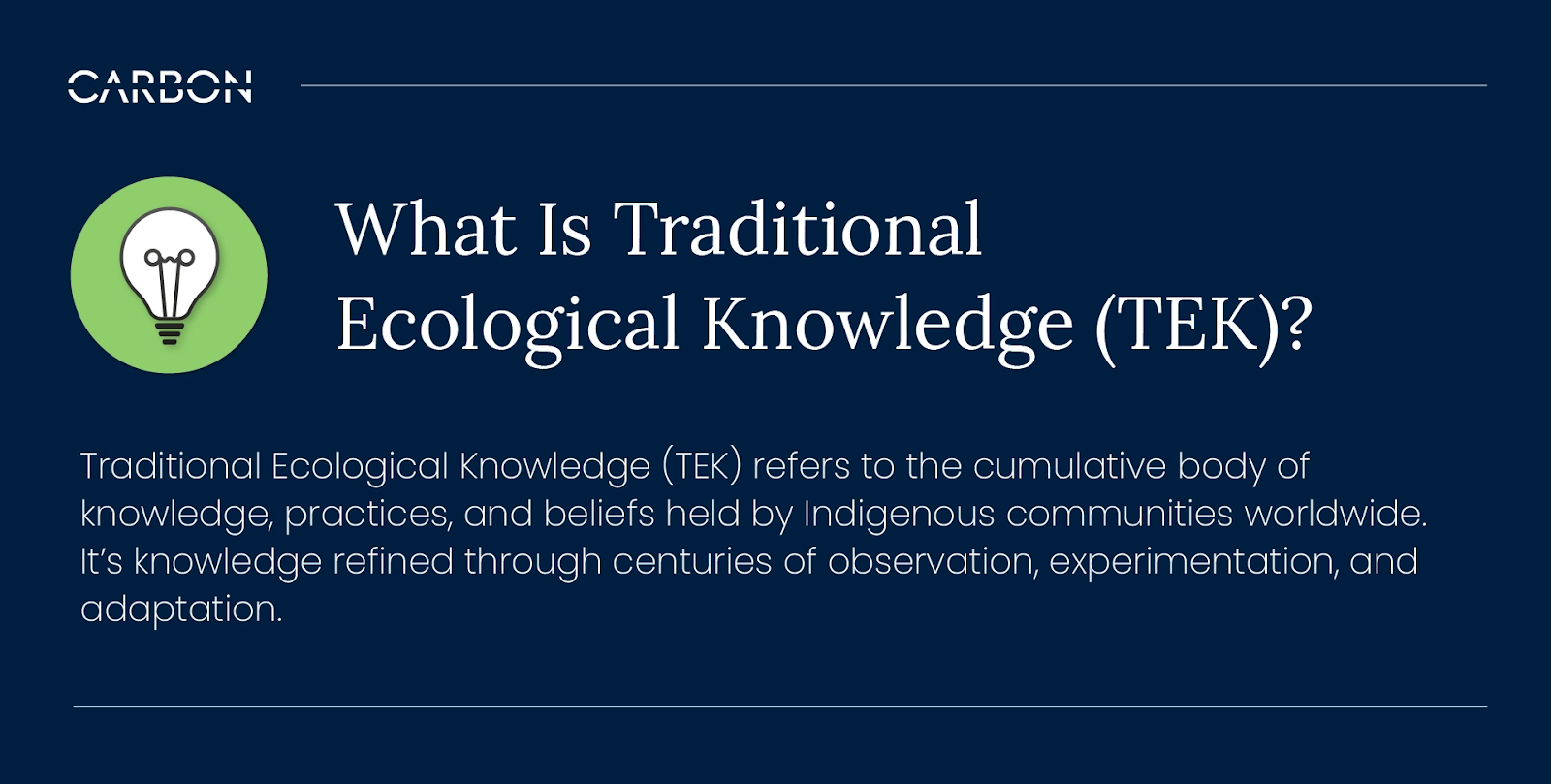
TEK isn’t just folklore or cultural tradition. It’s a practical, proven framework for living in harmony with natural systems. And when integrated with modern technology, it offers insights that high-tech solutions alone can’t replicate.
Core Principles Of TEK
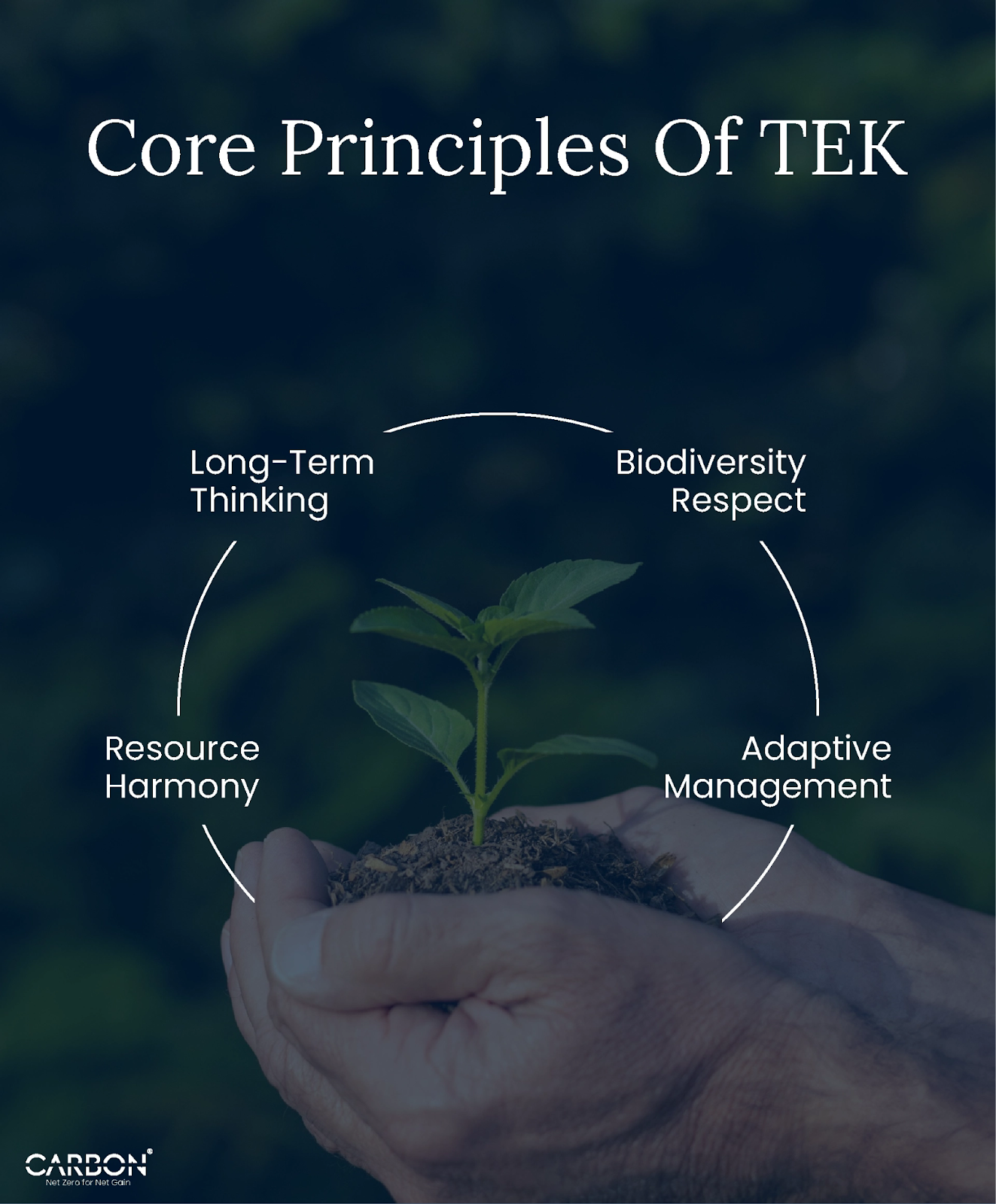
Corporations that dismiss TEK as outdated or irrelevant are missing out on principles that could reshape their sustainability strategies.
- Resource Harmony
- Indigenous practices often focus on sustainable use and regeneration rather than exploitation.
- Systems are designed to work with nature, not against it.
- Indigenous practices often focus on sustainable use and regeneration rather than exploitation.
- Long-Term Thinking
- Decisions are made with future generations in mind.
- The Seven Generation Principle, used by many Indigenous cultures, requires decision-makers to consider the impact of their actions on the next seven generations.
- Decisions are made with future generations in mind.
- Biodiversity Respect
- Prioritizing ecological balance and respecting natural cycles.
- Maintaining diversity isn’t just about preservation—it’s about building resilient systems that adapt to change.
- Prioritizing ecological balance and respecting natural cycles.
- Adaptive Management
- Continuously adjusting practices based on environmental feedback.
- Learning from past mistakes rather than repeating them.
- Continuously adjusting practices based on environmental feedback.
Example: Indigenous coastal communities might use controlled burns to manage forest ecosystems, preventing devastating wildfires and promoting biodiversity. This approach, when combined with AI-driven monitoring systems, could create fire management practices that are both predictive and preventive.
Why High-Tech Alone Isn’t Enough
Corporations rely heavily on AI, machine learning, and data analytics to meet their sustainability goals. But these tools, while powerful, have limitations.
1. They’re Built For Efficiency, Not Resilience
High-tech solutions are great at optimizing systems for maximum efficiency. But resilience isn’t the same as efficiency.
It’s about adaptability, redundancy, and robustness—qualities that AI systems often struggle to build in.
Example: A mining operation using predictive maintenance might improve efficiency. But when extreme weather strikes and local water sources are depleted, efficiency doesn’t matter. Adaptability does. And that’s something high-tech tools can’t always provide.
2. They’re Limited By Data Availability
AI systems need data to function. But what happens when the data is incomplete, biased, or outdated? TEK, on the other hand, is built on generations of observation and adaptation—a knowledge base that transcends narrow data sets.
Example: An agricultural company using satellite data to predict drought conditions might miss localized patterns that Indigenous farmers can recognize from centuries of experience. Combining these perspectives could result in a more robust, predictive system.
3. They Can’t Replace Local Knowledge
Technological solutions are often applied uniformly across diverse environments. But sustainability isn’t one-size-fits-all. What works in one ecosystem might be disastrous in another. TEK offers a localized understanding of ecosystems that no amount of high-tech modeling can replicate.
Example: A food and beverage company attempting to optimize its water usage through automated systems might overlook traditional water-harvesting techniques that have proven effective for centuries in arid regions. Combining these techniques with modern sensors could enhance efficiency and resilience.
Behavioral Science Insights: Why Corporations Ignore TEK
If TEK offers so many advantages, why do so many companies ignore it? The answer often comes down to bias.
Authority Bias
Corporations tend to trust Western scientific knowledge over Indigenous wisdom. High-tech solutions are seen as more credible simply because they’re backed by formal research and institutional authority.
Example: A steel manufacturer might invest heavily in AI-driven optimization tools while dismissing TEK-based strategies for soil restoration that could improve water retention and reduce emissions.
System Justification Bias
Companies prefer existing technological solutions because they fit within their established frameworks. Anything that challenges the status quo is seen as a threat rather than an opportunity.
Example: A chemicals company relying on predictive analytics might ignore TEK-based methods for managing chemical runoff, even if those methods could enhance overall sustainability.
Confirmation Bias
When companies convince themselves that high-tech solutions are the only valid approach, they overlook alternatives. TEK is dismissed as outdated or irrelevant, even when it offers practical, proven strategies.
Example: A manufacturing firm may assume that AI-driven efficiency tools are sufficient, ignoring TEK practices that could enhance biodiversity and resilience.
The Reframing Effect: What Needs To Change
Corporations aren’t intentionally ignoring TEK. They’re just stuck in a narrow mindset that prioritizes high-tech solutions over everything else. But here’s the truth: Technology alone isn’t enough.
Real resilience comes from integrating high-tech solutions with the practical wisdom refined over centuries.
And the companies that figure this out first? They’ll be the ones who build systems that actually last.
The challenge isn’t replacing high-tech systems with TEK. It’s about blending them. Creating hybrid models that draw on the strengths of both approaches.
How to Blend TEK With AI for Sustainable Operations
For decades, corporations have viewed sustainability through a narrow lens. They’ve invested heavily in high-tech solutions—AI, predictive analytics, renewable energy systems. All valuable. All important.
But technology alone isn’t enough. And the companies that truly want to future-proof their operations need to look beyond the obvious.
They need to blend modern systems with Traditional Ecological Knowledge (TEK) the sustainability practices refined over centuries by Indigenous communities.
That’s where the CarbonMinus Fusion Framework (CFF) comes in.
What Is The CarbonMinus Fusion Framework (CFF)?
The CarbonMinus Fusion Framework (CFF) is a structured model designed to integrate Indigenous knowledge systems with AI-driven optimization tools.
The purpose isn’t to replace modern systems with ancient ones. It’s to merge them, creating a hybrid resilience model that draws on the strengths of both approaches.
Where high-tech systems excel in precision, speed, and scalability, TEK offers adaptability, context-specific insight, and long-term resilience.
The Five Stages Of The CarbonMinus Fusion Framework (CFF)
Integrating two very different knowledge systems isn’t easy. That’s why CFF breaks the process into five distinct stages:
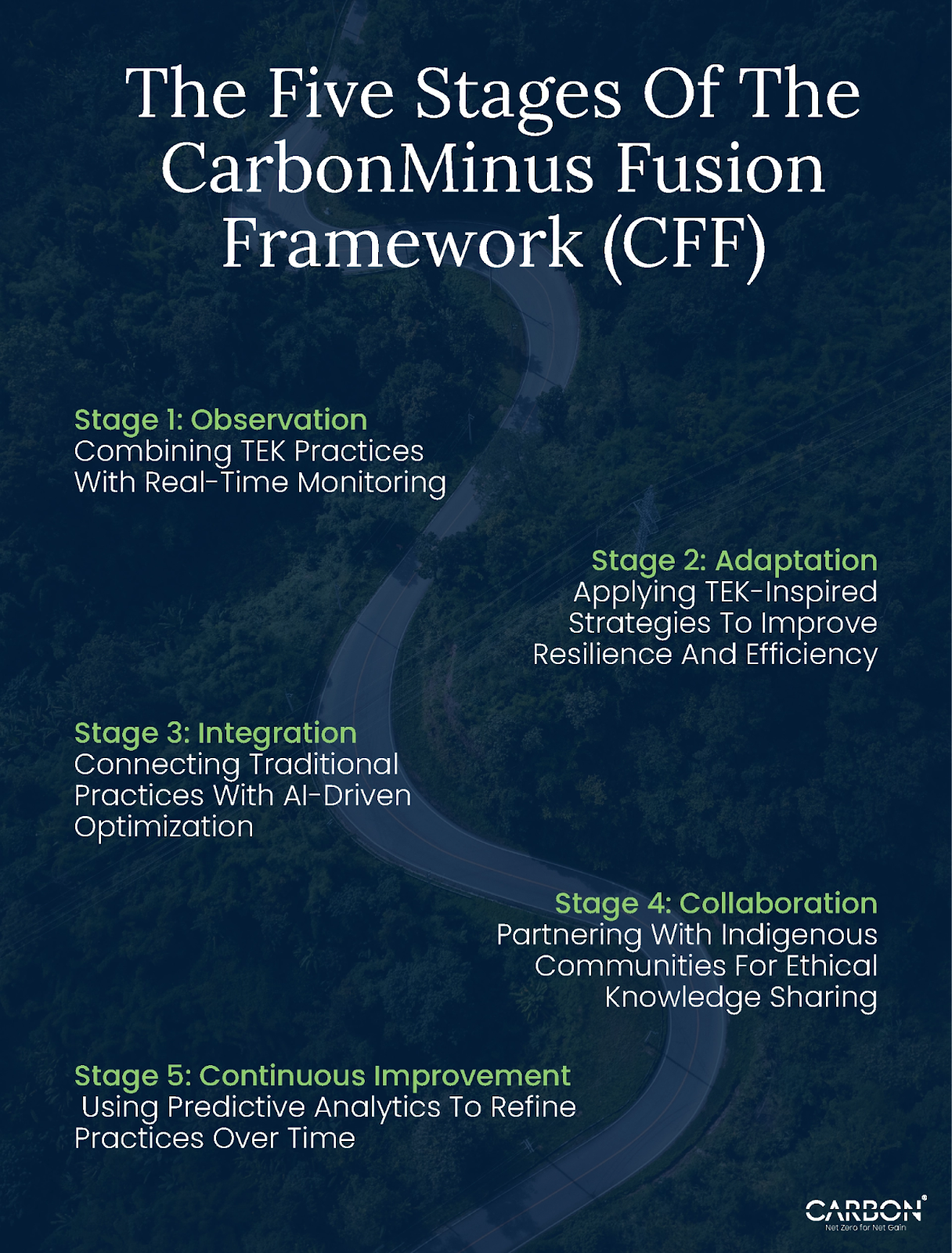
Stage 1: Observation – Combining TEK Practices With Real-Time Monitoring
Observation is the foundation of any resilience model. But traditional monitoring systems only capture what their sensors are designed to detect. They miss the broader context, the subtle patterns that Indigenous communities have been observing for generations.
Example: A food and beverage company operating in arid regions could combine real-time monitoring systems with TEK practices for water management. While sensors track moisture levels and predict rainfall, indigenous knowledge might suggest techniques for preserving water during droughts, like terracing, rainwater harvesting, or underground storage systems.
When these approaches are used together, the result is a more accurate, context-sensitive monitoring system.
Stage 2: Adaptation – Applying TEK-Inspired Strategies To Improve Resilience And Efficiency
The goal isn’t to simply mimic Indigenous practices. It’s to adapt them to modern systems and challenges.
TEK often emphasizes working with natural systems instead of trying to control them. And when corporations adopt this mindset, they open up new possibilities for resilience.
Example: A chemicals company facing periodic flooding could integrate TEK-inspired flood management techniques, like wetland restoration or controlled flooding, with predictive analytics. Instead of trying to prevent flooding entirely, the company might adapt by creating systems that redirect water flow and mitigate damage.
This approach isn’t about avoiding disruptions. It’s about absorbing them and turning them into opportunities for improvement.
Stage 3: Integration – Connecting Traditional Practices With AI-Driven Optimization
If your TEK-inspired strategies exist in isolation, you’re missing the point. The real power comes from connecting them to your broader optimization efforts.
The Integration stage of CFF is about making sure your resilience systems are tied to your data analytics, carbon accounting, and operational management tools.
Example: A cement manufacturer could apply TEK-inspired techniques for soil stabilization (like permaculture principles) and connect them to AI-driven monitoring systems that measure erosion rates, water retention, and carbon sequestration.
By tracking results in real-time, the company could continuously improve its resilience strategies. And by tying those results to broader carbon accounting systems, it could quantify its progress toward sustainability goals.
Stage 4: Collaboration – Partnering With Indigenous Communities For Ethical Knowledge Sharing
Here’s where most corporations get it wrong. They try to extract TEK without engaging the communities who created it.
The Collaboration stage of CFF emphasizes partnership, not appropriation. That means:
- Permission & Partnership: Ensuring all knowledge use is consensual and collaborative.
- Benefit Sharing: Providing economic or educational opportunities for participating communities.
- Transparency: Maintaining clear communication about how Indigenous knowledge is used.
- Acknowledgment: Giving credit to communities where knowledge originates.
Example: A manufacturing company implementing CFF could establish formal partnerships with local Indigenous groups, offering educational opportunities and revenue-sharing agreements in exchange for their expertise. This isn’t just ethical—it’s practical. Companies that work with Indigenous communities tend to see better results and stronger relationships.
Stage 5: Continuous Improvement – Using Predictive Analytics To Refine Practices Over Time
True resilience isn’t static. It’s dynamic. And it’s always evolving.
The final stage of CFF is about using predictive analytics to continuously refine TEK-based practices. Every time you implement a new strategy, you gather data. And every time you gather data, you gain insights.
Example: A steel manufacturer that integrates TEK-inspired water management practices could use predictive analytics to measure efficiency improvements, resource conservation, and carbon reductions. Over time, the company could refine its strategies, making them even more effective.
This isn’t just about keeping up. It’s about getting better, faster, and more resilient with each iteration.
Proprietary Metrics: How CFF Measures Success
Just as high-tech systems rely on Key Performance Indicators (KPIs), the Fusion Framework uses proprietary metrics to quantify resilience performance.
- Cultural Resilience Index (CRI):
- Measures how well traditional practices are integrated into broader sustainability efforts.
- Factors include community partnership quality, benefit-sharing agreements, and knowledge transparency.
- Measures how well traditional practices are integrated into broader sustainability efforts.
- Traditional Ecological Performance Score (TEPS):
- Quantifies the effectiveness of TEK-based sustainability practices.
- Formula: TEPS = [(Operational Efficiency Score / Environmental Variability Score) x 100] + Collaboration Index.
- Quantifies the effectiveness of TEK-based sustainability practices.
Example Calculation: A manufacturing facility with an operational efficiency score of 80 and an environmental variability score of 60 might achieve a TEPS of 133.3 if collaboration with Indigenous communities is rated highly.
Why Ethical Integration Isn’t Optional—It’s Essential
Here’s the uncomfortable truth: Most companies that try to integrate Traditional Ecological Knowledge (TEK) do it wrong.
They see TEK as a resource to be extracted, not a system of knowledge to be respected. They cherry-pick practices without understanding their context, adopt methods without permission, and claim credit without acknowledgment.
And the result? Appropriation, not integration.
But if you want to truly benefit from TEK—if you want to build resilience that lasts—ethical integration isn’t optional. It’s essential.
The Risk Of Appropriation: When Integration Becomes Exploitation
When corporations attempt to incorporate TEK without the consent or collaboration of the communities who developed it, the consequences go beyond bad PR. They undermine the very resilience systems they’re trying to strengthen.
Here’s what unethical integration looks like:
- Taking Without Asking: Using TEK-based practices without consulting the communities that developed them.
- Failing To Share Benefits: Profiting from Indigenous knowledge without providing economic or educational opportunities in return.
- Ignoring Cultural Significance: Treating TEK as a set of tools rather than a holistic knowledge system deeply rooted in culture and community.
Example: A food and beverage company might attempt to replicate Indigenous water conservation techniques without consultation. Even if it improves efficiency, it ignores the cultural knowledge that makes those techniques effective in the first place.
Appropriation doesn’t just hurt Indigenous communities. It weakens the effectiveness of the very practices companies are trying to adopt.
Why Ethical Integration Matters
If you’re trying to build resilience, ignoring the ethical dimension of TEK isn’t just irresponsible. It’s counterproductive.
Here’s why:
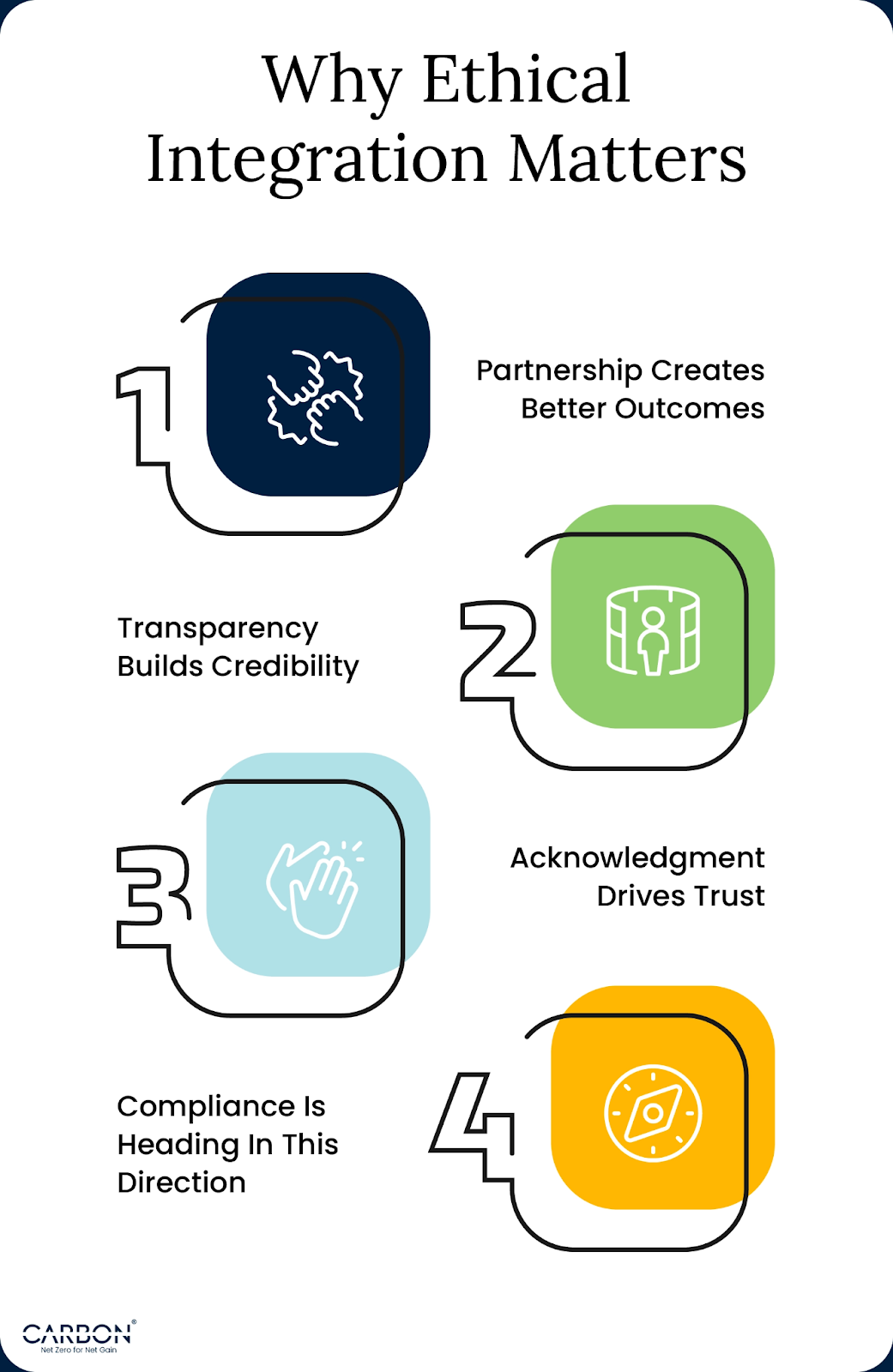
1. Partnership Creates Better Outcomes
The companies that do it right are the ones who collaborate, rather than extract. They engage with Indigenous communities as partners, not resources. And the results are stronger, more resilient systems.
Example: A chemicals company operating near an Indigenous community could establish formal partnerships that provide revenue-sharing agreements and educational opportunities in exchange for knowledge about sustainable water management. The collaboration could lead to improved water efficiency, reduced emissions, and enhanced community relations.
2. Transparency Builds Credibility
If you’re integrating TEK, transparency isn’t just a courtesy. It’s a necessity. Companies that fail to clearly communicate how they’re using Indigenous knowledge will inevitably face backlash. And rightfully so.
Example: A mining operation implementing TEK-based land restoration techniques could publish detailed reports acknowledging the source of the knowledge, describing how it’s being used, and sharing the benefits with Indigenous partners. The transparency itself becomes a competitive advantage.
3. Acknowledgment Drives Trust
Want to build credibility in your sustainability efforts? Start by giving credit where it’s due. Acknowledging the contributions of Indigenous communities isn’t just ethical—it’s essential for building lasting partnerships.
Example: A manufacturing company using TEK-inspired techniques for soil conservation could include acknowledgments in its sustainability reports, detailing the origins of the knowledge and the communities involved. This approach isn’t about virtue signaling. It’s about honest, respectful collaboration.
4. Compliance Is Heading In This Direction
Here’s something most companies don’t realize: Regulatory frameworks are increasingly recognizing the importance of TEK.
The Task Force on Climate-related Financial Disclosures (TCFD) and the Corporate Sustainability Reporting Directive (CSRD) are already pushing companies to consider a broader range of resilience metrics. And as Indigenous advocacy groups continue to raise awareness, it’s only a matter of time before TEK becomes a recognized part of compliance requirements.
Predictive Analysis: Within the next five years, companies that fail to integrate TEK ethically could face reputational damage, regulatory scrutiny, and even legal challenges.
In other words, ethical integration is a smart business move.
Best Practices For Ethical Integration
So, how do you integrate TEK ethically? It starts with following clear, actionable guidelines.
1. Permission & Partnership
If you’re using knowledge that isn’t yours, you need permission. Period. This means:
- Formal Agreements: Establishing contracts that outline how TEK will be used and what benefits will be shared.
- Consultation: Engaging Indigenous communities at every stage of the process—not just after decisions have been made.
Example: A cement company developing erosion control techniques could establish a partnership with local Indigenous groups, offering revenue-sharing agreements and educational opportunities in exchange for knowledge.
2. Benefit Sharing
If you profit from Indigenous knowledge, the communities who developed that knowledge should profit, too. This means:
- Revenue Sharing: Providing economic benefits directly to communities.
- Educational Opportunities: Offering training programs, scholarships, or internships as part of the partnership.
Example: A chemicals company could create a scholarship program for Indigenous students studying environmental science, ensuring that knowledge-sharing goes both ways.
3. Transparency & Accountability
Being transparent about your integration efforts is essential for maintaining credibility. This includes:
- Acknowledgments: Clearly crediting the communities involved.
- Reporting: Providing detailed, public reports about how TEK is being used and what benefits are being shared.
Example: A food and beverage company could publish annual reports detailing its partnerships with Indigenous communities, including specific metrics on how those partnerships are enhancing resilience and efficiency.
4. Continuous Improvement
Integration isn’t a one-time effort. It’s a continuous process of learning, adapting, and improving.
- Feedback Loops: Regularly consulting with Indigenous partners to refine and enhance practices.
- Predictive Analytics: Using data-driven insights to measure effectiveness and make adjustments over time.
Example: A mining operation using TEK-based land restoration techniques could regularly consult with Indigenous groups to refine its methods, ensuring the partnership continues to provide mutual benefits.
The Future Of Resilience Is A Fusion Of Wisdoms
The future of resilience isn’t about choosing between technology and tradition. It’s about blending them.
High-tech systems excel at precision, speed, and scalability. But they fall short when it comes to adaptability, context, and long-term thinking.
That’s where Traditional Ecological Knowledge (TEK) comes in.
The CarbonMinus Fusion Framework (CFF) shows what’s possible when you combine centuries-old wisdom with cutting-edge innovation. The result? Resilience systems that aren’t just stronger, they’re smarter.
Systems that adapt to changing conditions, respect natural cycles, and continually improve over time.
But here’s the truth: Integration without ethics is exploitation. And exploitation weakens everything it touches. That’s why ethical integration isn’t optional—it’s essential.
The companies that get this right will be the ones who thrive. They’ll be the ones whose resilience systems continue to grow stronger even as the climate grows more unpredictable.
Because the future of resilience isn’t about building bigger walls. It’s about building better systems. Systems that honor the knowledge of the past while embracing the technology of the future.
It’s time to build resilience that lasts. And that means fusing the best of both worlds.
FAQs
Q: What’s the business case for integrating TEK?
TEK boosts resilience, reduces emissions, and improves ESG outcomes—especially when tech systems hit blind spots or face data gaps.
Q: Can TEK really scale across global operations?
Yes—if paired with AI, localized, and integrated through frameworks like CFF. TEK offers adaptable principles, not rigid templates.
Q: Isn’t this cultural knowledge too specific to apply commercially?
That’s the point. TEK’s strength lies in local insight. When shared ethically, it adds context that technology alone can’t replicate.
Q: How do we ensure partnerships are ethical and not exploitative?
Use formal agreements, share benefits, acknowledge sources, and maintain transparency. CFF builds this into every stage.
Q: Will regulators care about TEK integration?
Yes—emerging ESG frameworks are increasingly recognizing Indigenous knowledge as vital to sustainable, resilient business models.

